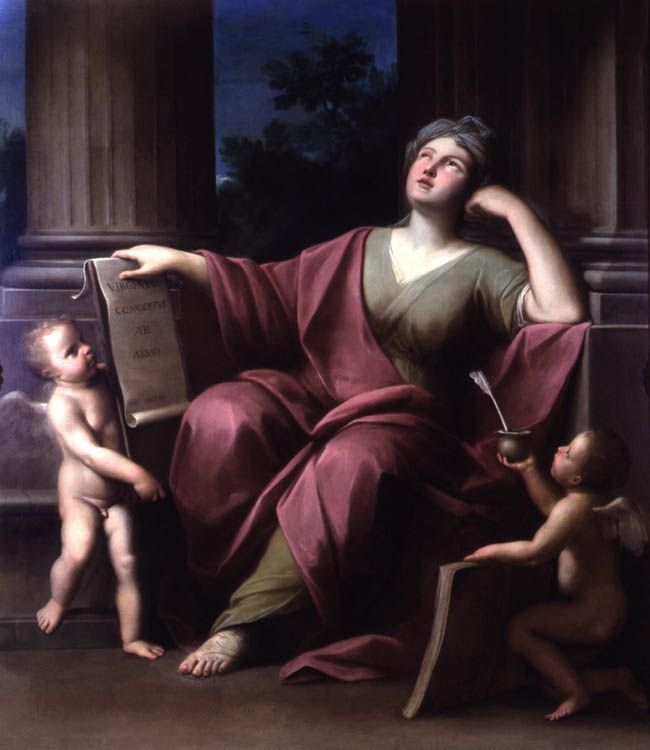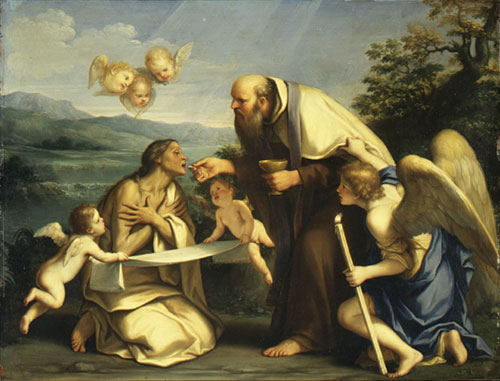Marcantonio Franceschini (1648 – 1729)
Get a Franceschini Certificate of Authenticity for your painting (COA) for your Franceschini drawing.
For all your Franceschini artworks you need a Certificate of Authenticity (COA) in order to sell, to insure or to donate for a tax deduction.
Getting a Franceschini Certificate of Authenticity (COA) is easy. Just send us photos and dimensions and tell us what you know about the origin or history of your Franceschini painting or drawing.
If you want to sell your Franceschini painting or drawing use our selling services. We offer Franceschini selling help, selling advice, private treaty sales and full brokerage.
We have been authenticating Franceschini and issuing certificates of authenticity since 2002. We are recognized Franceschini experts and Franceschini certified appraisers. We issue COAs and appraisals for all Franceschini artworks.
Our Franceschini paintings and drawings authentications are accepted and respected worldwide.
Each COA is backed by in-depth research and analysis authentication reports.
The Franceschini certificates of authenticity we issue are based on solid, reliable and fully referenced art investigations, authentication research, analytical work and forensic studies.
We are available to examine your Franceschini painting or drawing anywhere in the world.
You will generally receive your certificates of authenticity and authentication report within two weeks. Some complicated cases with difficult to research Franceschini paintings or drawings take longer.
Our clients include Franceschini collectors, investors, tax authorities, insurance adjusters, appraisers, valuers, auctioneers, Federal agencies and many law firms.
We perform Marcantonio Franceschini art authentication, appraisal, certificates of authenticity (COA), analysis, research, scientific tests, full art authentications. We will help you sell your Marcantonio Franceschini or we will sell it for you.

Marcantonio Franceschini was an Italian painter of the Baroque period, active mostly in Bologna. He was a pupil of Carlo Cignani, with whom he worked on the frescoes in the Palazzo del Giardino in Parma (1678-1681). He worked closely for many years with his brother-in-law, Luigi Quaini, who also was the cousin of Cignani.
Franceschini had a long career painting canvases on religious and mythological subjects for patrons throughout Europe. Franceschini decorated the palazzo Ranuzzi (1680) and palazzo Marescotti Brazzetti (1682) in Bologna. Among his most prominent extant masterpieces, are the fresco cycle in the church of Corpus Domini in Bologna (1688-94) and San Bartolomeo (1690). Franceschini frescoed the Sala d’Onore (“Hall of Honor”) in the Ducal palace of Modena. He painted the altarpiece in the Duomo di Finale and the canvas of San Carlo in the church of the same name in Modena.

Unfortunately, his massive program of historical and mythologic scenes in the Sala del Maggior Consiglio of the Palazzo Ducale of Genoa (1701-1704) were destroyed by a fire in 1777. He painted 26 canvases of mythological subjects for the Prince of Liechtenstein in Vienna (1692-1700). He also painted for the palaces Spinola and the Pallavicini Podestà (1715) of Genoa. Canvases of the four seasons (1716) are now found in the Pinacoteca di Bologna. There are two canvases of the Story of Rachel in the Pinacoteca B.P.E.R.
He painted the “cartoons” used to make the mosaic decoration of the Cappella del Coro in St. Peter’s Basilica. Knighted by pope Clement XI. He was founding a member and a subsequent director of the Clementine Academy in Bologna.

His paintings have an academic and idealist strain, even for a member of the Bolognese School of Painting. The sparse figures are severely arranged and often porcelain in features. He worked with a younger colleague, Donato Creti. His style is often classified as Barochetto, a mixture of baroque and rococo; but it also could be said the neoclassical influence of French artists was beginning to overtake the baroque tradition. Wittkower describes him as the “Bolognese Maratta”.
Numerous painters worked and trained in his prolific studio. Among those who spent time as pupils, apprentices, or assistants were Tomasso Aldrovandini, Luca Antonio Bistoia, Giacomo Boni, Francesco Caccianiga, Ferdinando del Cairo, Antonio Cifrondi, Giacinto Garofalini, Ercole Graziani the elder, Girolamo Gatti, Pietro Gilardi, Giuseppe Marchesi (il Sansone), Michelangelo Monticelli, Giuseppe Pedretti,Pietro Francesco Prina, Antonio Rossi (painter), Gentile Zanardi, his son Jacopo, and Giacomo Boni.
Still wondering about an Italian painting in your family collection? Contact us…it could be by Marcantonio Franceshini.
Reviews
1,217 global ratings
5 Star
4 Star
3 Star
2 Star
1 Star
Your evaluation is very important to us. Thank you.
